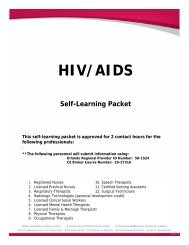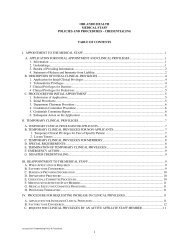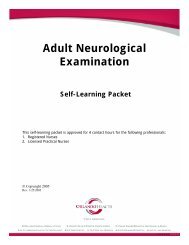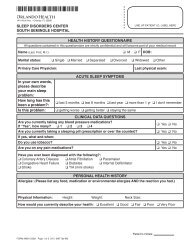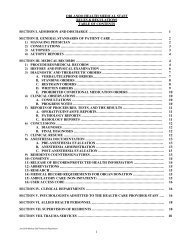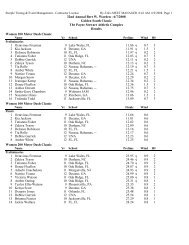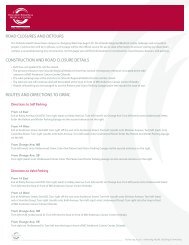Introduction to CV Pharmacology - Orlando Health
Introduction to CV Pharmacology - Orlando Health
Introduction to CV Pharmacology - Orlando Health
Create successful ePaper yourself
Turn your PDF publications into a flip-book with our unique Google optimized e-Paper software.
<strong>CV</strong> <strong>Pharmacology</strong><br />
Isoproterenol<br />
Sometimes called the “cardiac whip”, Isopreterenol (Isuprel) is a potent beta-adrenergic agonist<br />
with essentially no alpha adrenergic activity. Isopreterenol produces large increases in<br />
myocardial contractility, au<strong>to</strong>maticity and conductivity. These actions profoundly increase<br />
myocardial oxygen demand and increase the risk of myocardial ischemia, myocardial infarction,<br />
and dysrhythmias. Because of its severe side effect profile Isopreterenol is now used only for<br />
very specific indications, most commonly in cardiac transplantation. Because it is used so rarely,<br />
Isopreterenol will not be discussed further in this packet. For further information please refer <strong>to</strong><br />
Lexicomp and Micromedex.<br />
Sodium Bicarbonate<br />
Sodium bicarbonate is used as a buffering agent in patients with a preexisting metabolic acidosis.<br />
When bicarbonate combines with an acid, it forms carbonic acid, which usually dissociates <strong>to</strong><br />
water and carbon dioxide. In the presence of inadequate respira<strong>to</strong>ry function (when carbon<br />
dioxide is not rapidly cleared from the system) carbonic acid does not dissociate <strong>to</strong> carbon<br />
dioxide and water. Instead, it remains carbonic acid, which can lead <strong>to</strong> an intracellular acidosis<br />
and result in a decrease in myocardial contractility.<br />
In general, the administration of sodium bicarbonate during a cardiac arrest situation is<br />
associated with poor resuscitation outcomes. For this reason, sodium bicarbonate is no longer<br />
routinely given as part of resuscitation efforts.<br />
Indications<br />
Sodium bicarbonate is indicated for several specific causes of pulseless electrical activity or<br />
asys<strong>to</strong>le within ACLS pro<strong>to</strong>cols. It is given <strong>to</strong> patients with a preexisting metabolic acidosis such<br />
as patients in renal failure or diabetic ke<strong>to</strong>acidosis. However, it is not given <strong>to</strong> patients in<br />
respira<strong>to</strong>ry acidosis. It can also be given <strong>to</strong> patients with hyperkalemia or those who have<br />
overdosed on tricyclic antidepressants or phenobarbital. A continuous infusion of sodium<br />
bicarbonate given immediately prior <strong>to</strong> and post procedure has been shown <strong>to</strong> reduce the<br />
incidence of contrast-induced nephropathy for patients undergoing cardiac catheterization,<br />
computed <strong>to</strong>mography (CT), diagnostic or therapeutic arteriography, or transjugular intrahepatic<br />
portal systemic shunt (TIPS) placement.<br />
Precautions and Interactions<br />
Sodium bicarbonate can lead <strong>to</strong> metabolic alkalosis if <strong>to</strong>o much is administered. Because of the<br />
high sodium content, it may cause hypernatremia and increase serum osmolality, resulting in<br />
massive diuresis and cellular dehydration.<br />
2010 <strong>Orlando</strong> <strong>Health</strong>, Education & Development 41



